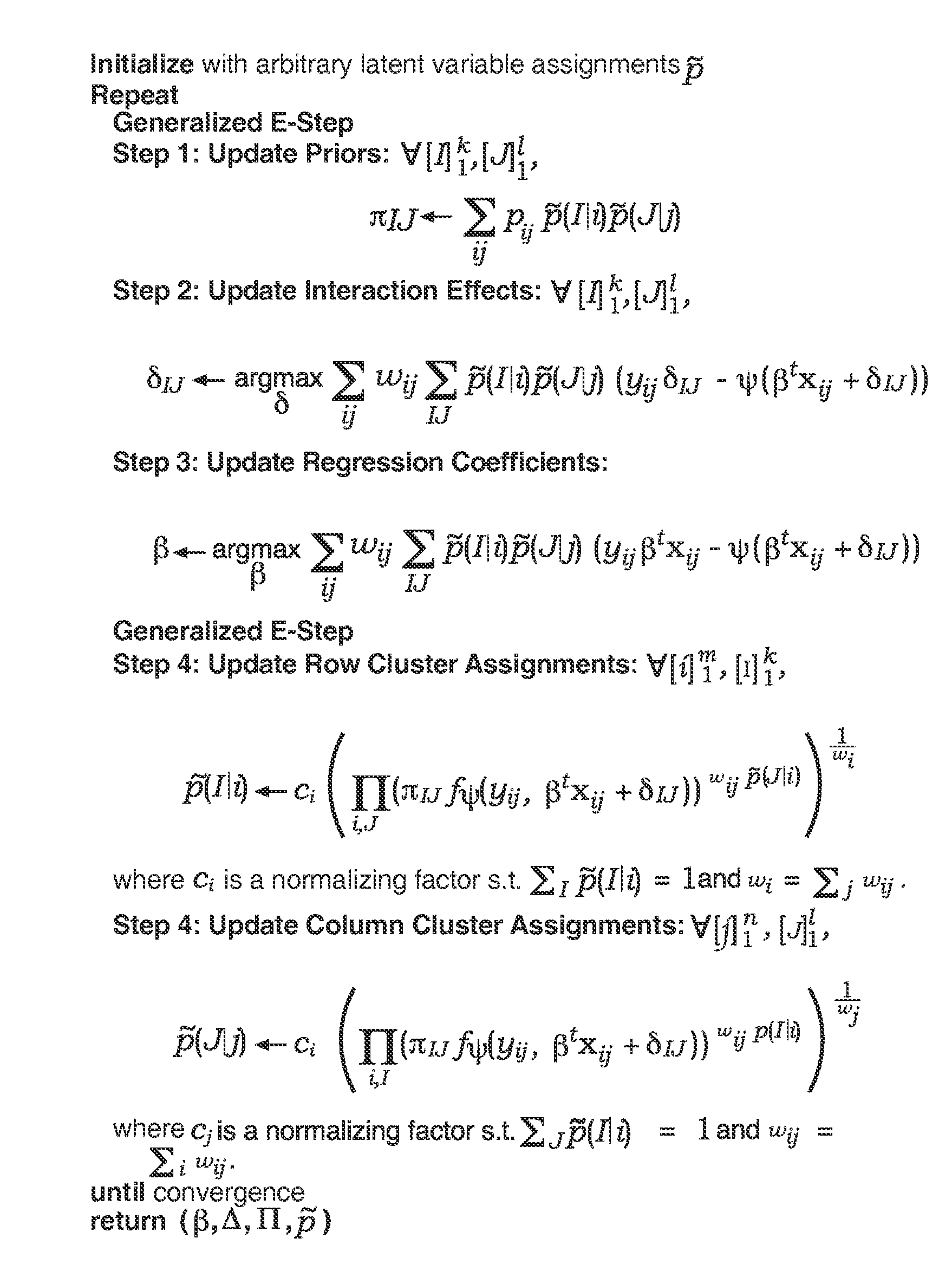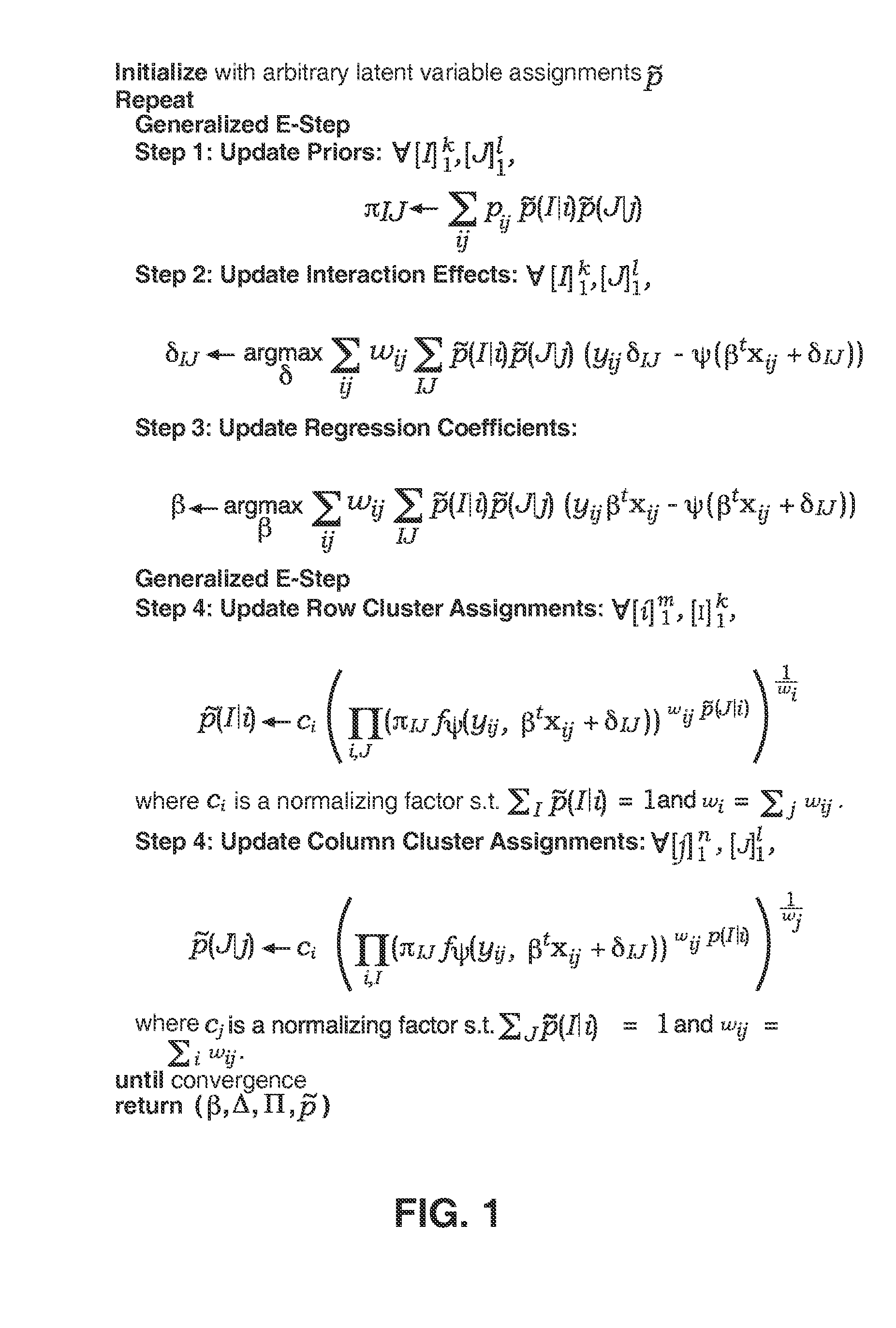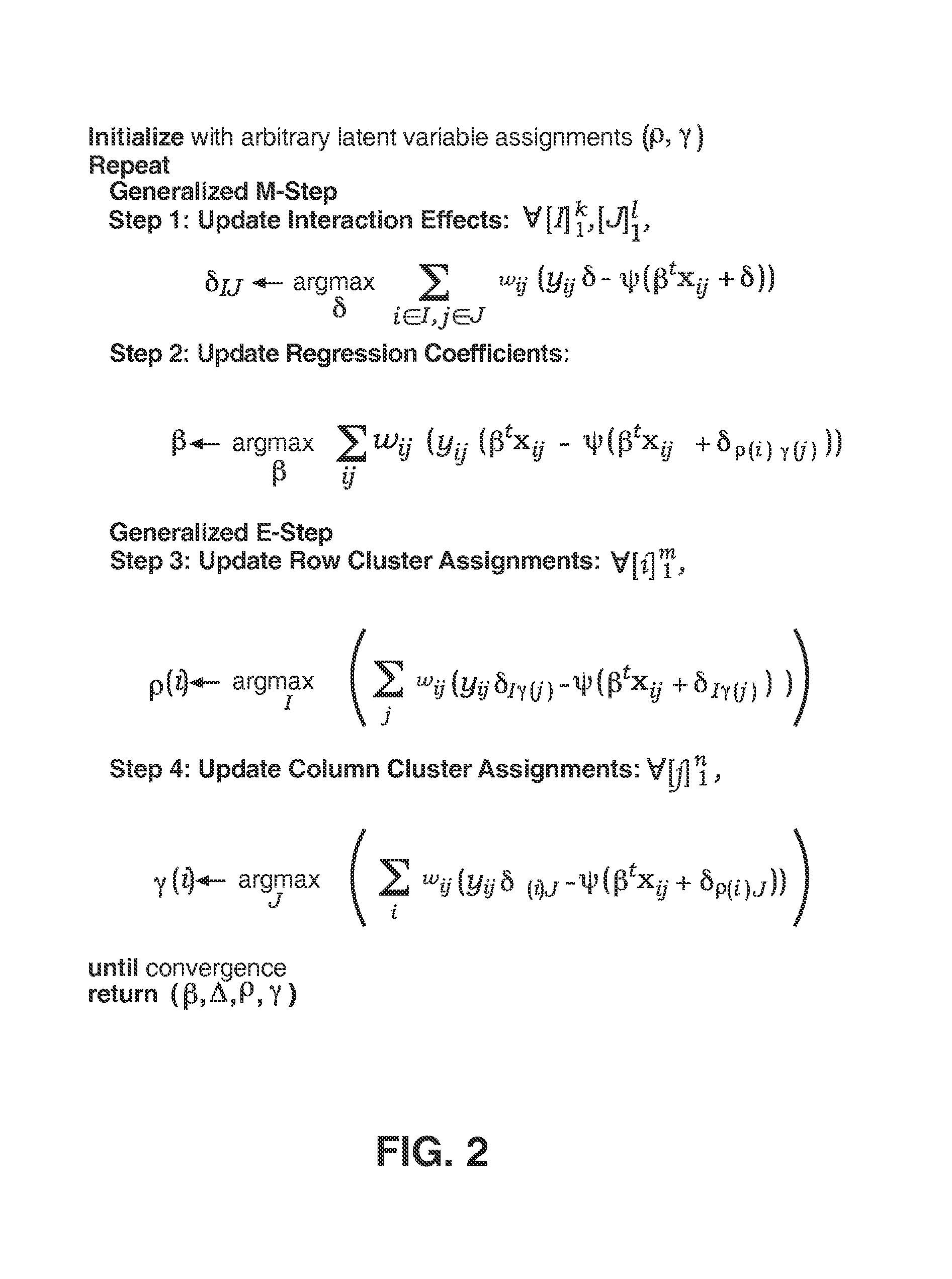Predictive discrete latent factor models for large scale dyadic data
a discrete latent factor and predictive modeling technology, applied in the field of statistics, can solve problems such as the challenge of statistical modeling
- Summary
- Abstract
- Description
- Claims
- Application Information
AI Technical Summary
Benefits of technology
Problems solved by technology
Method used
Image
Examples
case study 1
[0080] Relevance Classification using Logistic Model:
[0081]In this study, we explore the benefits of our approach for relevance classification, which involves predicting a binary response (relevant or not) given a pair of objects that can be interpreted as the rows and columns of the response matrix. At least two objectives in conducting this experiment include (a) showing an application of PDLF for binary response and (b) showing that combining covariate information and modeling local structure leads to better predictive performance relative to methods that do not account for both these information simultaneously.
[0082]For our experiments, we used a subset of the MovieLens dataset consisting of 459 users, 1410 movies, and 20000 ratings (range 1-5) as well as 23 attributes based on user demographics, movie genres and their interactions. We binarized the response variable by choosing ratings greater than 3 as relevant and ratings less than or equal to 3 as not relevant. To predict th...
case study 2
[0084] Imputation of Missing Values using Gaussian Model:
[0085]This experiment focuses on the case where the dyadic response is continuous and the learning task can be viewed as predicting missing values in a matrix. We used the same MovieLens dataset as in the first case study. Since most of the existing techniques for addressing this task such as singular value decomposition (SVD), nonnegative matrix factorization (NNMF), and correlation-based methods implicitly assume a Gaussian generative model, we transformed the response, i.e., the rating values using ynew=√{square root over ( )}(6-y) to eliminate the skew and make the distribution more symmetric and close to Gaussian.
[0086]To predict this response, we use the hard PDLF algorithm (FIG. 2) for Gaussian distributions with both row and column clusters set to 5; in addition, we used covariates to account for the row and column effects. Table 5.9 shows the mean absolute error in the predictions (after inverse transformation) obtain...
case study 3
[0089] Feature Discovery using Poisson Model:
[0090]This experiment illustrates the utility of the proposed methodology for discovering hidden covariates. Specifically, we consider the task of predicting the number of times an ad served on a web-site is clicked from an ip (or ip-domain), which is useful for monitoring click volume and other related applications. For our experiment, we used a dataset consisting of 47903 ip-domains, 585 web-sites and 125208 ip-website dyads with click-counts and two covariates, ip-location and routing type. Since we deal with count data, we employ a PDLF model based on a Poisson distribution with k=l=5. Similar to the earlier experiment, additional covariates that adjust for row (ip) and column (website) effects are also included. As in the previous two experiments, the predictive performance of the hard PDLF algorithm, measured in this case by I-divergence between observed and predicted (shown in Table 5.13) is better than a straightforward Poisson re...
PUM
 Login to View More
Login to View More Abstract
Description
Claims
Application Information
 Login to View More
Login to View More - R&D
- Intellectual Property
- Life Sciences
- Materials
- Tech Scout
- Unparalleled Data Quality
- Higher Quality Content
- 60% Fewer Hallucinations
Browse by: Latest US Patents, China's latest patents, Technical Efficacy Thesaurus, Application Domain, Technology Topic, Popular Technical Reports.
© 2025 PatSnap. All rights reserved.Legal|Privacy policy|Modern Slavery Act Transparency Statement|Sitemap|About US| Contact US: help@patsnap.com



